The Yeti SB130 TLR is specced the way most Yeti employees have their bikes for the daily lunch ride. The company has been closing from 11:30 AM to 1:00 PM every day for the last 20 years as the boys and girls that work there go out for their lunch ride. Anyone who’s ridden the trails in Colorado will understand why the SB130 TLR is specced the way it is.
Click here for an overview of the best trail bike in test.
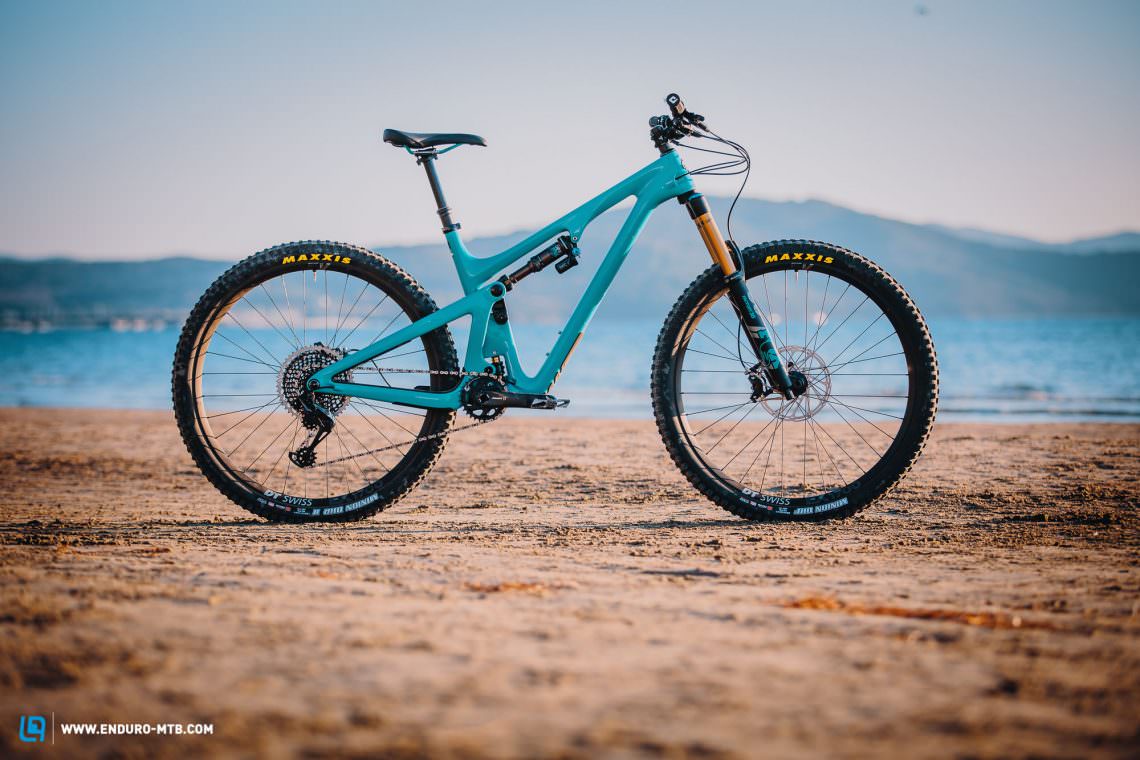
The Yeti SB130 isn’t just available in two different carbon versions, but also in a variety of different builds. The SB130 TLR is specced the way that Yeti employees prefer to ride themselves. It comes with a FOX 36 Factory GRIP2 fork with one centimetre more travel (160 mm) than the standard SB130 and a longer shock stroke for extra travel at the rear. That means that on this bike, the rear suspension provides 137 mm of extremely sensitive travel. The componentry has also been optimised for more downhill fun, in the form of SRAM CODE RSC brakes and a grippy MAXXIS Minion DHF/DHR II tire combination with the reinforced EXO+ casing. You also get a SRAM X01 Eagle drivetrain, robust DT Swiss EX1700 wheels and a 175 mm FOX transfer dropper post to round off the € 8,190 bike, making a positive impression overall. The contact points deserve special praise as the ODI Elite Pro grips and the WTB Silverado saddle are among the most comfortable on test.
Yeti SB130 TLR
€ 8,190
Specifications
Fork FOX 36 FLOAT Factory GRIP2
Rear Shock FOX DPX2 Factory
Seatpost FOX Transfer Performance Elite 175 mm
Brakes SRAM Code RSC 200/180 mm
Drivetrain SRAM X01 Eagle 30/10-50
Stem Race Face Turbine 50
Handlebar Yeti Carbon 800 mm
Wheelset DT Swiss EX 1700
Tires MAXXSI MINION DHF/DHR II EXO+ 2,5/2,4
Technical Data
Size S M L XL
Weight 14,2 kg
Wheelsize 29"
Travel (f/r) 160/137 mm
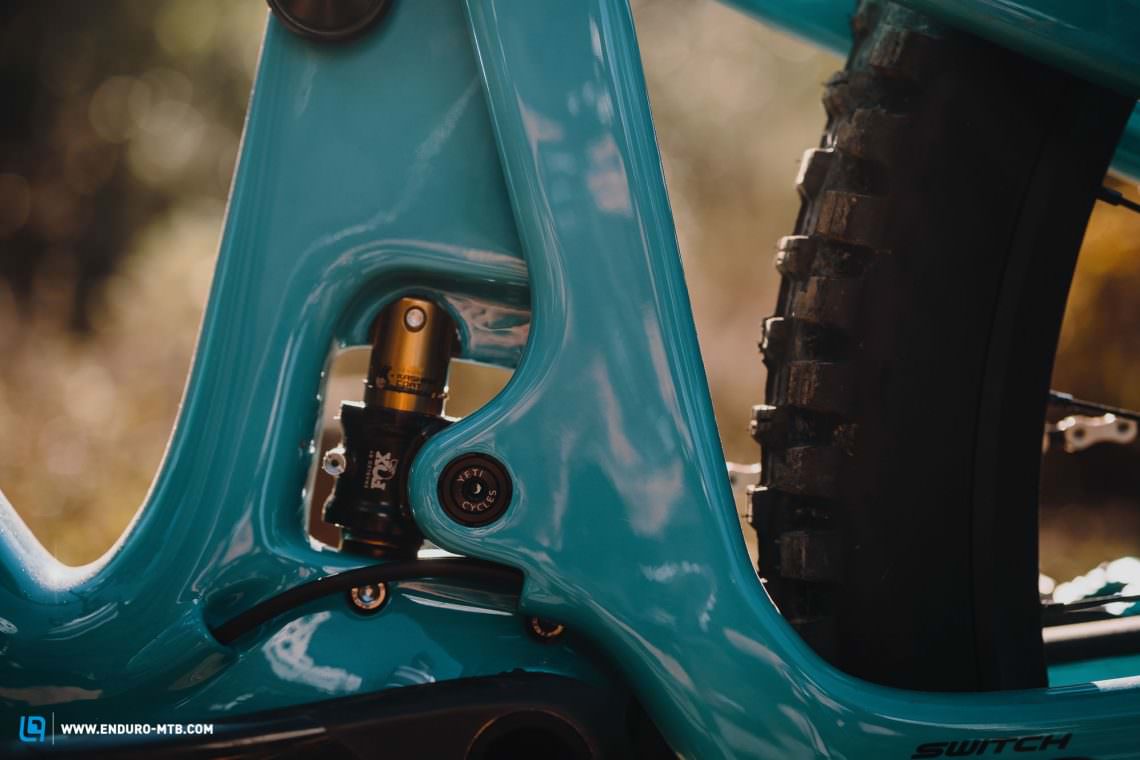
The main pivot of the Yeti SB130 is attached to their proprietary Switch Infinity link. This moves up and down as it cycles through its travel and allows Yeti to fine-tune the bike’s kinematics.

A few years ago, you would have been hard-pressed to find a 160 mm travel fork on anything but a thoroughbred enduro bike. However, the Yeti SB130 manages to combine trail bike efficiency with an enormously capable package.
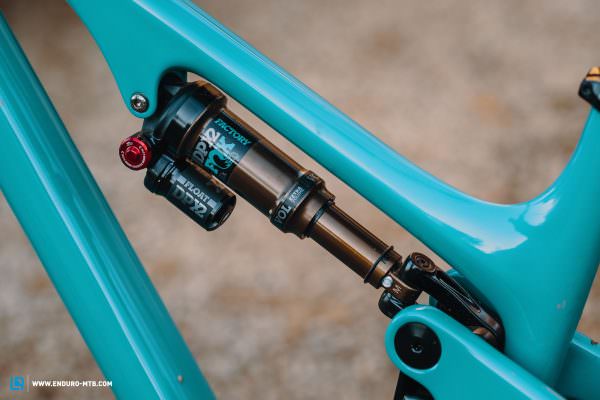
At first glance, the shock of the Lunch Ride edition looks the same as the other SB130 models. But instead of 52.5 mm, the DPX2 has a 55 mm stroke. This gives the bike 7 mm more travel.
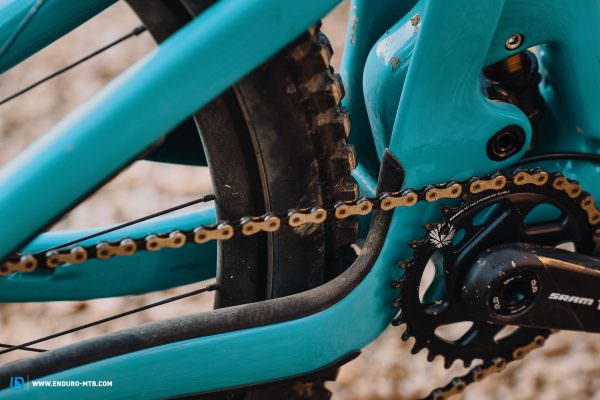
The chainstay protector is extra long. You won’t chip the paint and the bike is also very quiet.
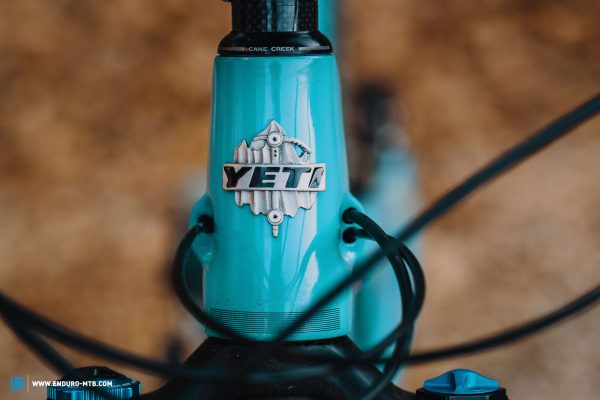
The Yeti logo is simply iconic. This alone is reason enough for many fans of the brand to choose this bike.

While many bikes in the test field are specced with uncomfortable grips and saddles, that’s not the case with the Yeti!
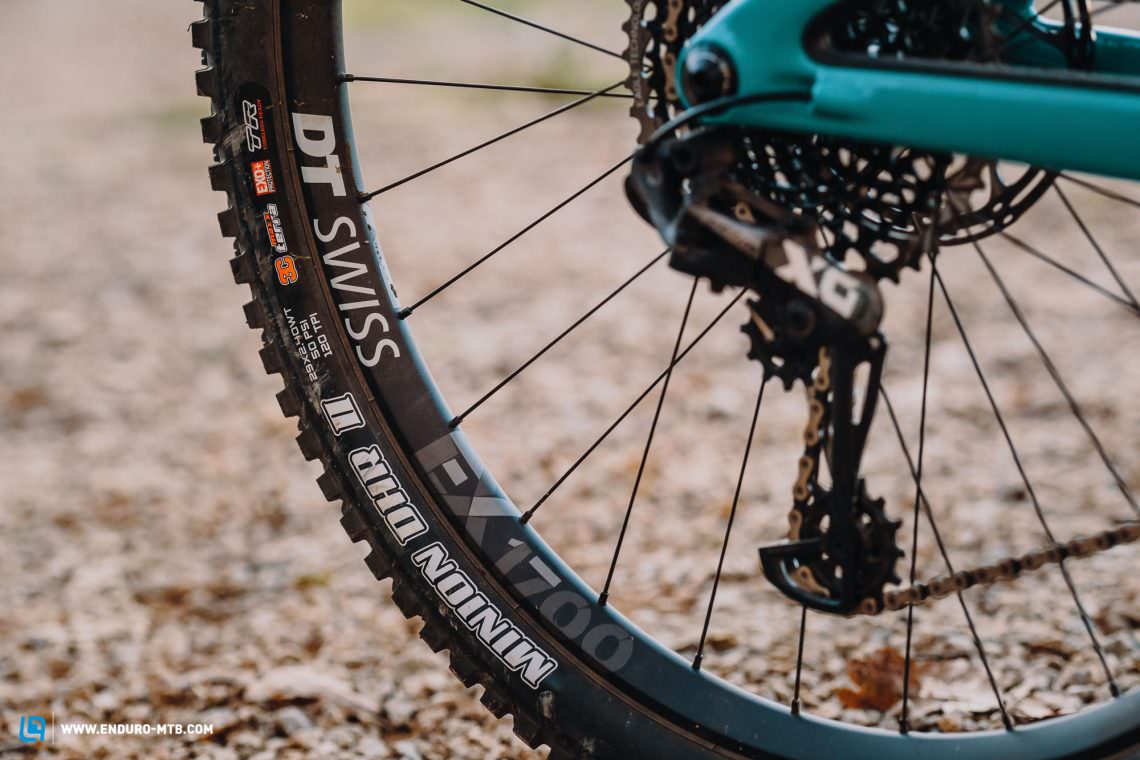
If you would like to make the Yeti more efficient and are willing to accept some compromises in its downhill capabilities, you could fit lighter wheels
Geometry of the Yeti SB130 TLR
The modern geometry of the Yeti SB130 ticks all the right boxes. The reach is 480 mm long, the head angle is slack at 65.5° and the 76.9° seat tube angle is nice and steep. Thanks to the 450 mm short seat tube there is enough room for a long dropper post which gets a thumbs up from us! The 433 mm chainstays are rather short and play a significant role in defining the bike’s handling.
Unique and ingenious – the Switch Infinity link performs brilliantly both uphill and downhill!
| Size | S | M | L | XL |
|---|---|---|---|---|
| Top tube | 571 mm | 602 mm | 625 mm | 653 mm |
| Head tube | 95 mm | 99 mm | 110 mm | 121 mm |
| Head angle | 65.5° | 65.5° | 65.5° | 65.5° |
| Seat angle | 77,1° | 77,0° | 76,9° | 76,9° |
| Chainstays | 433 mm | 433 mm | 433 mm | 433 mm |
| Tretlagerhöhe | 338 mm | 338 mm | 338 mm | 338 mm |
| Wheelbase | 1174 mm | 1206 mm | 1230 mm | 1260 mm |
| Reach | 430 mm | 460 mm | 480 mm | 505 mm |
| Stack | 611 mm | 615 mm | 625 mm | 635 mm |
SB130 on test
One of the unique selling points of Yeti bikes is their Switch Infinity link and it’s no different on the Yeti SB130 TLR, making for a one of a kind riding experience. The pedalling position is central and super comfortable, but what makes the bike so good on the climbs is the enormous amount of traction that the sensitive rear end is able to generate, without feeling inefficient at all. The SB130 is an excellent climber and you can confidently spare yourself the effort of activating the climb switch on the shock.
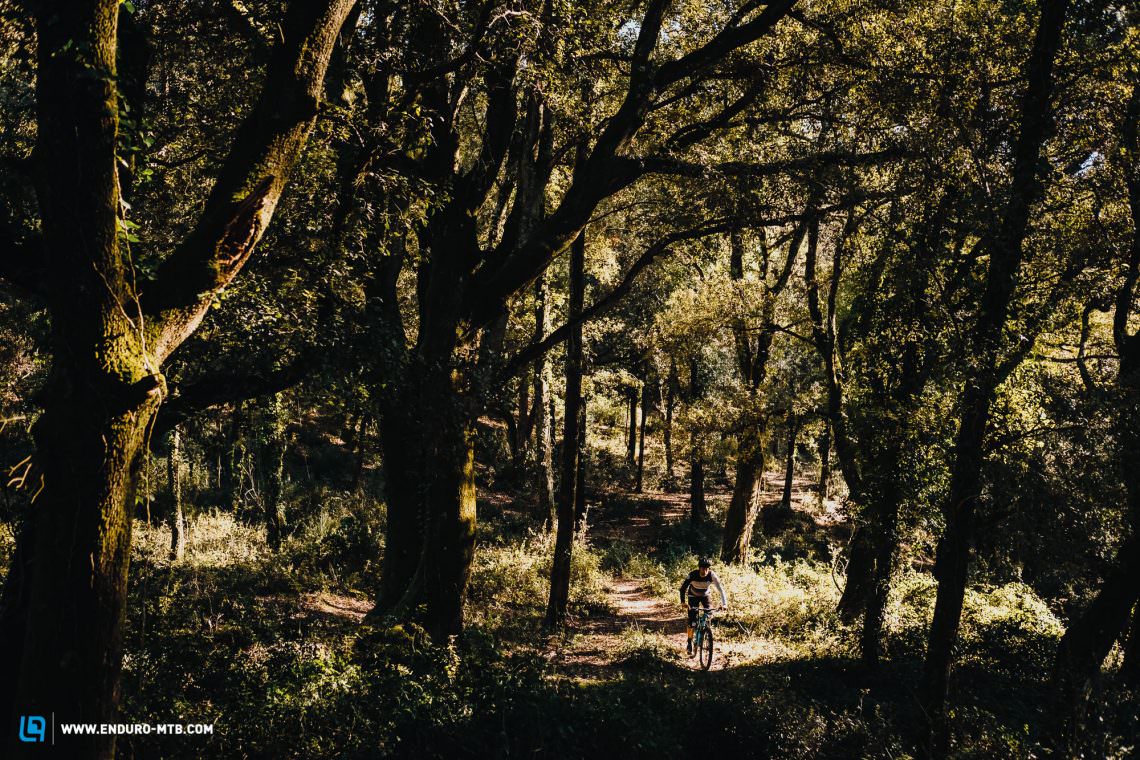

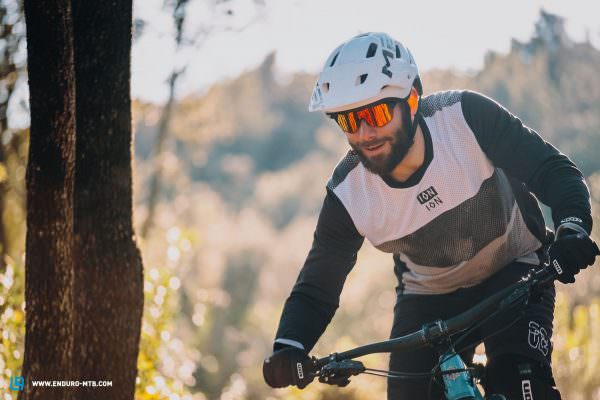
On the straights, the Yeti encourages you to keep the brakes open, but it demands a lot of input in the corners!
As on the climbs, the suspension of the SB130 simply absorbs all bumps on the descents. The rear suspension offers a very good mix of responsiveness and support. Though it can sometimes bottom out on harsh hits, we never found this uncomfortable. Together with the long front triangle, the bike is very composed and masters the toughest enduro tracks with ease. It’s in the corners that the Yeti demands the rider’s full attention. Overall, the riding position on the Yeti is rather rear-heavy, meaning you have to stay very active to make sure you have enough weight on the front wheel. If your riding style is too passive, the SB130 will quickly understeer and wash out in the corners. On the other hand, if you actively work the bike, you’ll be rewarded with very lively and agile handling.
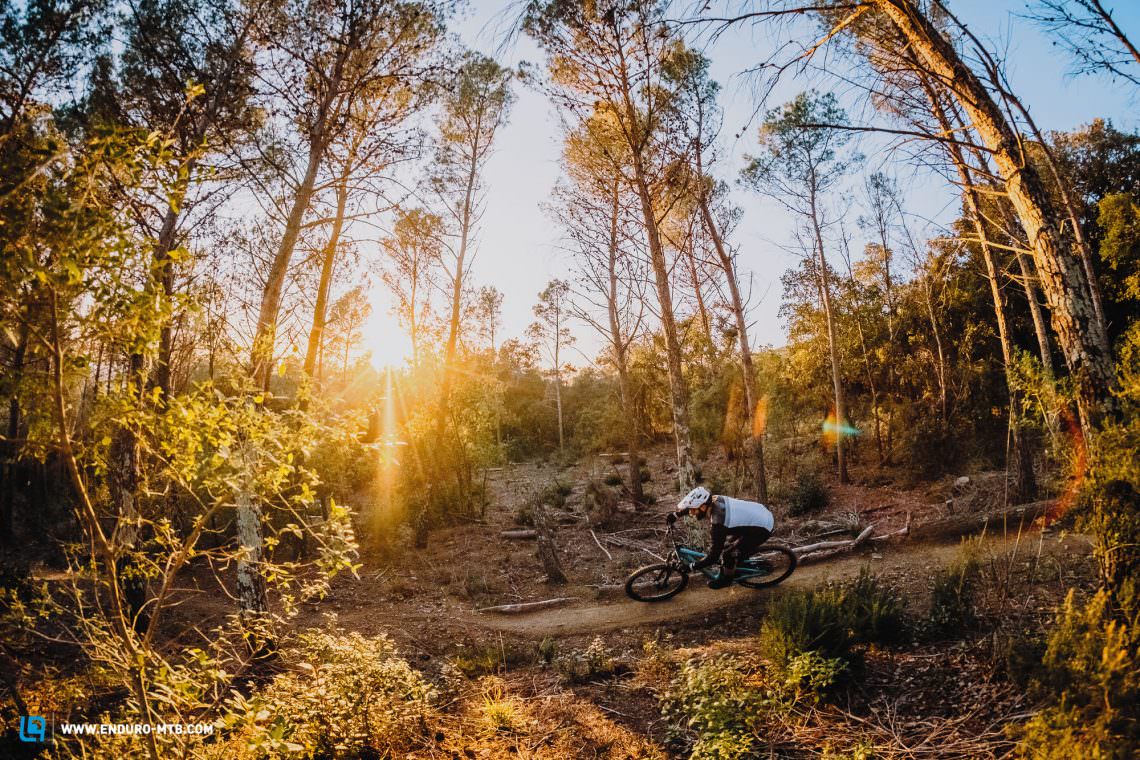
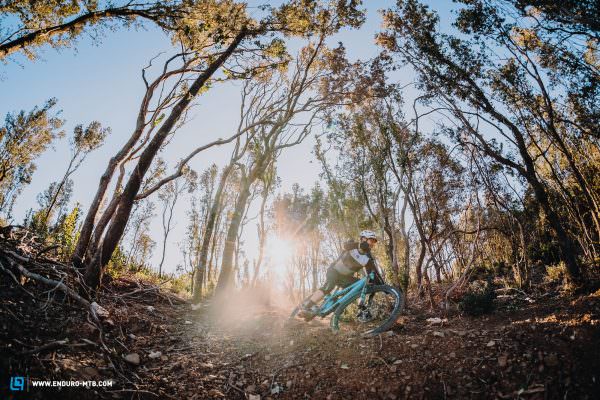

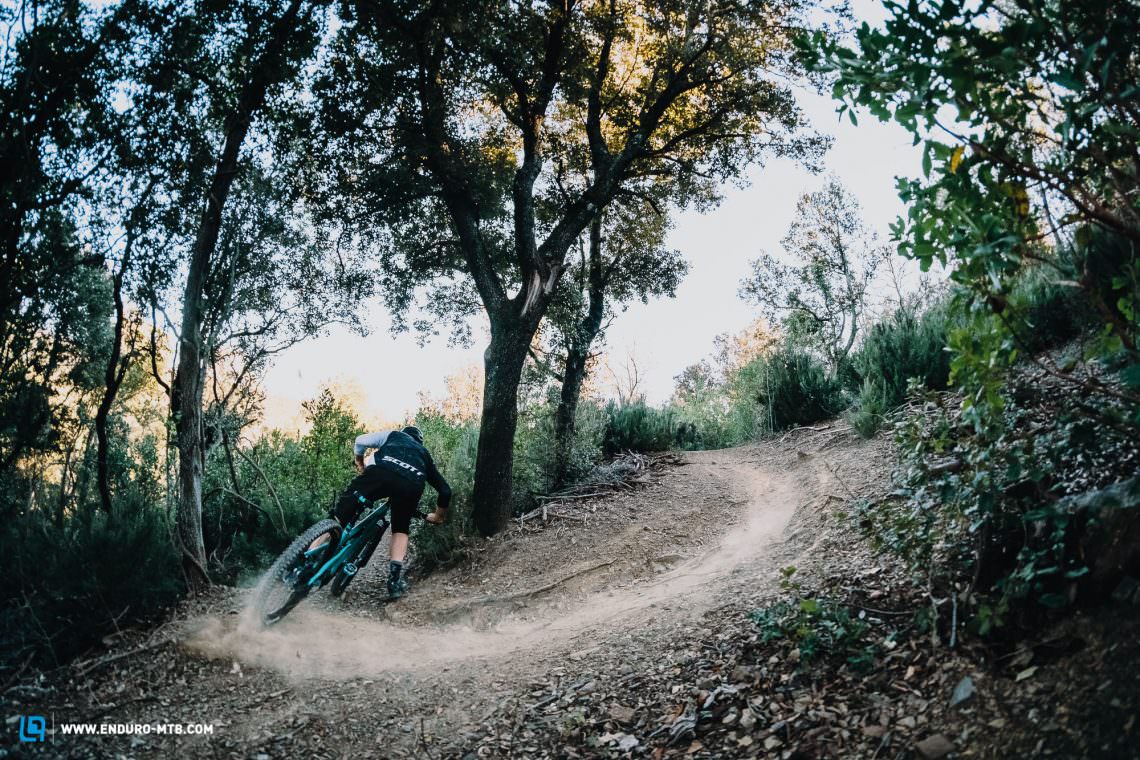
Tuning tip: possibly lighter wheels for a more lively ride
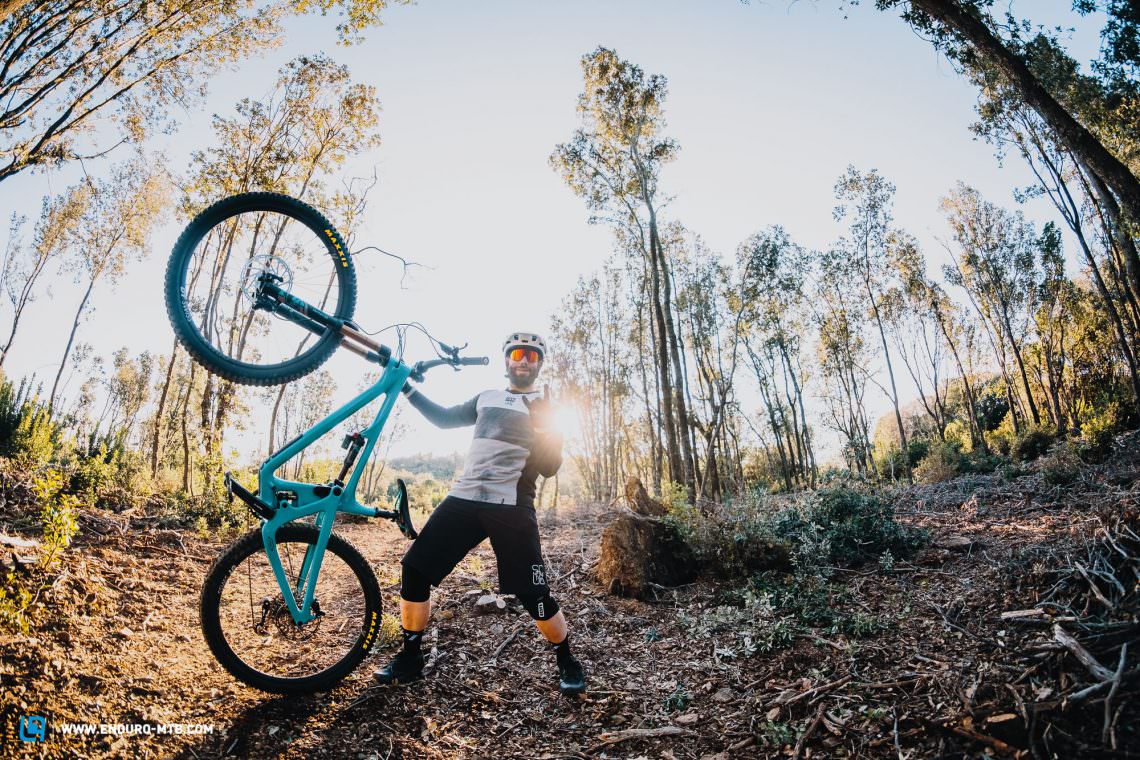
How does the Yeti SB130 TLR compare to the competition?
The Yeti SB130 TLR and the Ibis Ripmo are very similar. Both offer a great pedalling position on the climbs and lots of reserves for the descents. Due to its more sensitive rear suspension, the Yeti offers a little more comfort uphill and more grip downhill, but you have to ride it more actively than the good-natured Ibis Ripmo, which is the better all-rounder overall.
Conclusion of the Yeti SB130 TLR
The Yeti SB130 TLR is a dream bike that offers an undreamt-of level of comfort and traction. The bike is an absolute powerhouse on the climbs and if you like to go hard on the descents, this is the bike for you. However, it does require your attention and a very active riding style – if not, you’ll quickly go down.
Tops
- rear suspension offers lots of traction and comfort
- great pedalling position on the climbs
- comfortable even on demanding trails
Flops
- requires a very active riding style in the corners
- a little underwhelming on flat, flowing trails
For more information head to yeticycles.com
The test field
Click here for an overview of the best trail bike in test.
All bikes in review: Cannondale Habit Carbon 1 (Click for review) | Canyon Spectral CFR 9.0 SL (Click for review) | Giant Trance Advanced Pro 29 (Click for review) | Ibis Ripmo AXS (Click for review) | Nukeproof Reactor 290 (Click for review) | Norco Optic C1 (Click for review) | Orbea Occam M-LTD (Click for review) | Radon Slide Trail 10 (Click for review) | Santa Cruz Hightower CC X01 Reserve (Click for review) | Scott Genius 900 Tuned AXS (Click for review) | Specialized Levo SL Expert Carbon (Click for review) | Specialized S-Works Stumpjumper SRAM AXS 29 (Click for review) | Trek Fuel EX 9.9 X01 AXS Project ONE (Click for review) | YT JEFFSY CF PRO (Click for review)
Did you enjoy this article? If so, we would be stoked if you decide to support us with a monthly contribution. By becoming a supporter of ENDURO, you will help secure a sustainable future for high-quality mountain bike journalism. Click here to learn more.
Words: Photos: Christoph Bayer, Finlay Anderson, Markus Frühmann, Jonas Müssig









